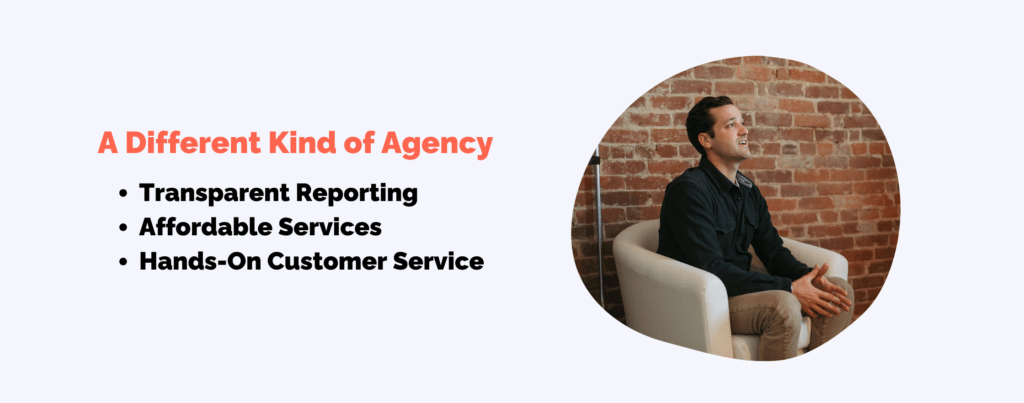Are you a small business wondering how to go about designing a website?
You might be relying on your Facebook page as a substitute, or even wondering if you need a website in the first place. Have you considered the price you’d pay for not having one?
Website design and development involves a large devotion of time and energy, but the rewards are huge. Shockingly, almost half of entrepreneurs still don’t have a small business website. Furthermore, only a third of those who do, use their website to communicate news to customers and leads.
If you don’t want to see your small business screaming into the void, it’s time to consider a website. If you don’t have one, how will you win customers from the half of your rivals that do?
We’ll explain how to know your audience, develop a strategy, hone your content, and track the results. Read on!
Know Your Audience
When you’re designing a website, the first thing to keep in mind is your target audience. If you have anything less than a crystal-clear image of your buyer persona, then you need to first invest time in researching the profile of your typical customers.
Once you have established a firm understanding of who you are aiming your website towards, you are better able to be in-sync with them. Successful website design and development will require accurate information to feed every stage of the process.
When you’ve internalized a personification of your average buyer, creative decisions, like tone, color, and imagery, flow with relative ease. If your small business has never conducted audience research, then the results will uncover a wealth of knowledge to define or evolve your brand identity.
It’s important to note that after defining and establishing the tone of your business, you should be consistent throughout the website. Staying “on brand” ensures that your message resonates with clarity and cohesion. Website visitors are all too easily distracted and don’t need much of an excuse to get confused and leave.
Research the websites of your successful competitors, who will have invested resources in honing their messaging already. Identify what is working for them, but also uncover gaps in their strategy. You can incorporate these findings to meet and exceed the competition.
Mood boards are useful to visualize creative approaches and see how well ideas communicate.
Develop a Strategy
Website design strategies that work focus on one primary goal and secondary goals that reinforce the main-agenda.
The primary goal of a small business website might be to turn leads into customers. A secondary goal could include turning existing customers into repeat business. The third goal of your website may center on engagement – encouraging your visitors to share your content on social media, for instance.
A simple layout wins in nearly all cases at capturing the limited attention of your target audience. It’s important to have a responsive website design. This entails having your website optimized to resize and restructure for various browsers and platforms.
Desktop users were once the majority of website visitors, but now, the lion’s share of site viewers will use various mobile devices. Tablets and phones of all shapes and sizes mean that a flexible and adaptable design is essential.
Map out the buyer journey when conceiving the structure of your website. Create a flowchart to prototype your site so that important pages are easy to navigate. Later, a more detailed sitemap can come together as the structure becomes more fully formed.
Attention, Interest, Decision, and Acquisition (AIDA) is a principle that can help shape the buyer funnel.
Focus on Content
There’s another variant of the AIDA principle: Attention, Interest, Desire, and Action. This can work within the website pages themselves to ensure that all selling pages are effective at driving action.
A website built in a content management system (CMS) like WordPress will make it easier to create, delete, and maintain content.
Choose appropriate keywords that are popular in your industry, and build your website contents around them. Use them in the title, meta descriptions, and headings, but don’t over-insert them awkwardly. Your copy must have a human linguistic flow so that search engines can easily read and index your pages.
Create regular content with a focus on your keywords to increase your organic search engine optimization (SEO) rankings. Your goal should be visibility high in the results on the first page of Google, for your industry and in your area. Regular articles, written in a blog format, are very effective at accomplishing this.
When developing a website, make sure that the information on each page is presented in an easy-to-read fashion. Good use of white space is important, so as not to overload the eyes.
Break up the copy so that it is most effective in a hierarchical sense. Frequent one-line spaces between paragraphs make the copy easy to scan. Keep paragraphs 2-3 sentences long for the same reason, and make good use of headings, subheadings, etc.
Track Results
Winning website development strategies often treat all pages as if they were landing pages. Sometimes, unexpected pages may rank very well, causing high numbers of visitors to land on them.
By tracking your results using Google Analytics, you can optimize these pages further still. Website speed is important so as not to lose visitors who might get frustrated by the loading time. Website analytics are useful at monitoring performance and engagement.
It’s a good idea to have a call-to-action (CTA) at the top of pages, perhaps in the menu. This CTA is intended for buyers who are further along in the decision-making process. A second and more prominent CTA would be well-placed near the end of the page contents, with the rest of the page built around it.
A/B testing involves serving up two slightly different pages to a split audience. The page style with the best results wins.
Remember, the goal of any website geared around selling is to win out over the competition. Competitive analysis tools are useful in website design and development to serve this objective.
Finally, you must always evolve and tweak your website because a successful website is never a finished, static entity.
Website Design and Development
We’ve shown that website design and development requires careful planning if you want to hit your goals. Don’t be overwhelmed by the hard work that’s necessary to beat your competitors.
If you’re a small business owner developing a website, we can help you. We specialize in website design and provide creative marketing services to small businesses across the nation. Our core services are web development and hosting, but we also offer custom photography, videography, and search engine optimization (SEO).
Contact us today, and we’ll connect you with your audience.








